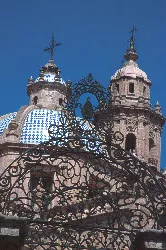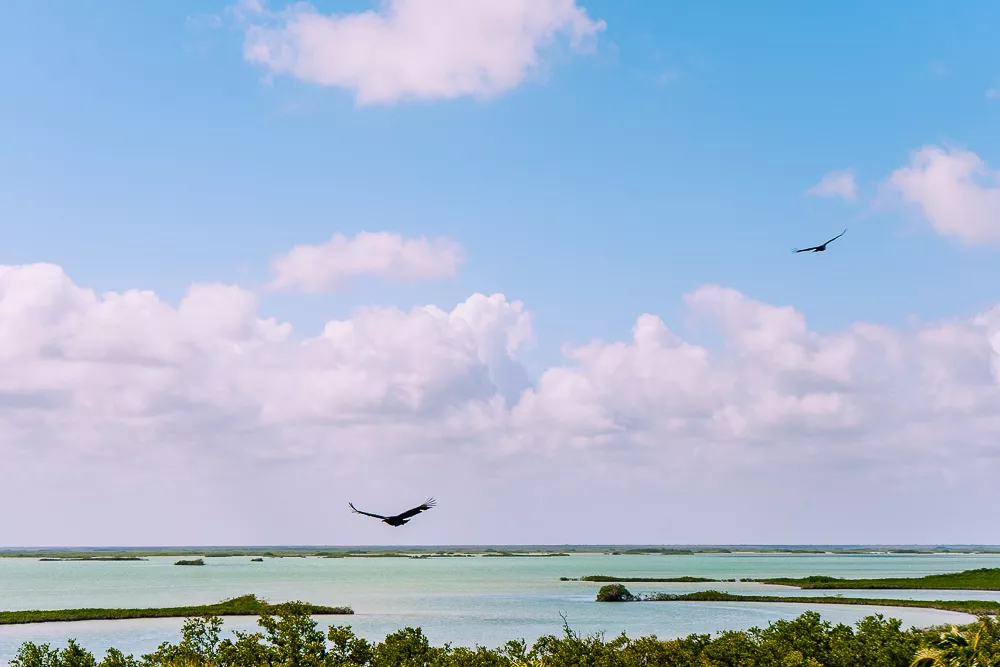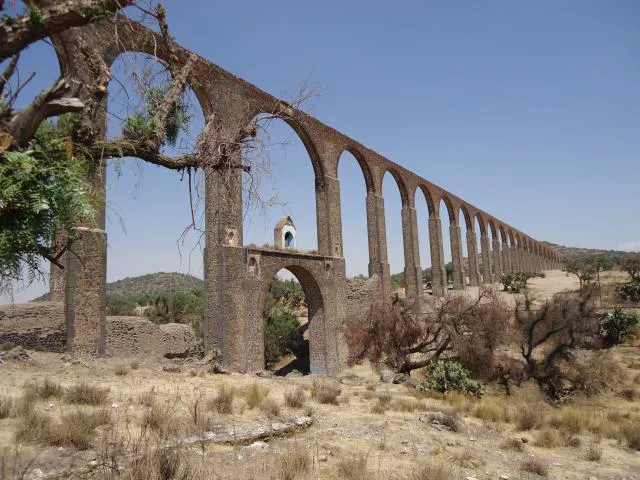Travel to These Remarkable Mexican World Heritage Sites
The United Nations Educational, Scientific and Cultural Organization (UNESCO) maintains a list of cultural and natural sites that are recognized for their outstanding universal value to humanity. Mexico boasts an impressive array of 28 cultural sites, 5 natural sites, and one mixed site included on UNESCO’s prestigious list of World Heritage sites.
Aqueduct of Padre Tembleque Hydraulic System

This 28-mile long aqueduct, built between 1553 and 1570, traverses ravines, valleys, and even underground in some areas, crossing the state line between Hidalgo and the State of Mexico. It features the highest single-level arcade ever constructed in an aqueduct. The project was initiated by Franciscan friar Padre Tembleque, with significant support from local indigenous communities, showcasing the collaborative spirit of Mexican history.
El Pinacate y Gran Desierto del Altar Biosphere Reserve

This expansive Biosphere Reserve in the state of Sonora encompasses over 4,400 square miles. It consists of two diverse areas: a volcanic system featuring El Pinacate, a large dormant volcano, and the Great Altar Desert, home to sand dunes that rise over 650 feet tall. This region displays remarkable biodiversity, hosting over 1,000 different species of plants and animals, making it a vital ecological zone.
Camino Real de Tierra Adentro
The Camino Real de Tierra Adentro, known as the “Royal Inland Road,” stretches approximately 1,600 miles and includes 55 sites along its route, featuring five existing World Heritage sites. Historically significant, this road facilitated the transportation of silver from the mines of Zacatecas, Guanajuato, and San Luis Potosí, serving as a crucial trade route for over 300 years from the mid-16th to the 19th century.
Prehistoric Caves of Yagul and Mitla in the Central Valley of Oaxaca

Sitting on the northern slopes of Oaxaca’s eastern valley (Tlacolula Valley), this site features two Prehispanic archaeological complexes and a series of prehistoric caves and rock shelters. These locations provide vital evidence of the transition from nomadic hunter-gatherers to early agricultural communities. Fragments of corn cobs discovered in one cave are among the oldest evidence of maize domestication, while ten-thousand-year-old seeds here represent some of the earliest known instances of domesticated plants on the continent.
Agave Landscape and Ancient Industrial Facilities of Tequila

Situated in the state of Jalisco, the tequila-producing region features a landscape of sprawling blue agave fields alongside four urban settlements, including the famous town of Tequila. Here, several large distilleries are dedicated to the fermentation and distillation of agave products. The culture surrounding agave is integral to Mexican national identity, and Tequila itself makes for an easy and enriching day trip destination from Guadalajara.
Ancient Maya City of Calakmul, Campeche

The Calakmul site is nestled deep within a tropical forest in the state of Campeche. Remarkably well preserved, this ancient Maya city showcases the architectural layout and structures typical of a Maya capital. Noteworthy are the commemorative stelae at Calakmul, which exemplify Maya artistry and provide insights into the city’s political and spiritual development.
Archaeological Monuments Zone of Xochicalco

Located in Morelos, the archaeological site of Xochicalco dates back to A.D. 650–900, a period characterized by the decline of major urban centers from Mesoamerica’s Classic era, such as Teotihuacan, Monte Alban, and Palenque. The site exemplifies exceptional preservation as a fortified political, religious, and commercial center from this historical epoch.
Archeological Zone of Paquimé, Casas Grandes

Situated in northern Mexico, in the state of Chihuahua, the archaeological site of Paquimé (also known as Casas Grandes) provides significant evidence of the evolution of adobe architecture in North America. This site played a pivotal role in the trade and cultural interactions between the Pueblo community in the southwestern United States, northern Mexico, and Mesoamerican civilizations.
Central University City Campus of the Universidad Nacional Autónoma de México

The campus of Mexico’s National Autonomous University (UNAM) in Mexico City is a remarkable example of 20th-century modernism, intertwining urbanism, architecture, engineering, landscape design, and the fine arts while taking inspiration from local traditions, particularly Mexico’s pre-Hispanic ancestry. This impressive campus emerged from the collaborative efforts of more than sixty architects, engineers, and artists who worked together from 1949 to 1952 to create these iconic spaces.
Earliest 16th-Century Monasteries on the Slopes of Popocatepetl

Fourteen monasteries located on the slopes of the Popocatepetl volcano southeast of Mexico City are exceptionally well-preserved. They exemplify the architectural style adopted by the early missionaries—Franciscans, Dominicans, and Augustinians—tasked with converting the indigenous populations to Christianity during the early 16th century.
El Tajin, Pre-Hispanic City

Inhabited between 800 and 1200 A.D., the Pre-Hispanic city of El Tajin is situated in Veracruz. Following the decline of Teotihuacan, it emerged as the most significant center in northeast Mesoamerica. The city’s cultural reach extended across the Gulf and into the Maya region as well as the high plateaus of central Mexico. Its distinctive architecture, featuring intricate carved reliefs on its columns and friezes, places it among the unique Mesoamerican sites.
Franciscan Missions in the Sierra Gorda of Querétaro

Five Franciscan missions from the mid-18th century reflect the cultural intersection between European missionaries and the nomadic populations of central Mexico. The ornate facades of the churches represent a collaborative artistic effort between the missionaries and local natives, illustrating a unique blend of traditions.
Historic Centre of Mexico City and Xochimilco

Mexico City, established in the 16th century on the ruins of the Aztec capital Tenochtitlan, features five Aztec temples, the largest cathedral in the Americas, and remarkable 19th and 20th-century public buildings such as the Palacio de las Bellas Artes. Xochimilco is well-known for its chinampas, or floating gardens, a sophisticated Aztec agricultural technique that contributes to this area’s cultural richness.
Historic Centre of Morelia

Founded in the 16th century, Morelia still retains its original grid layout and features over 200 historic buildings made from the region’s characteristic pink stone, exemplifying an eclectic architectural history.
Historic Centre of Oaxaca and Archaeological Site of Monte Albán

Founded in 1642, Oaxaca’s urban planning is exemplified by its grid layout, aligning with the earthquake-prone region. The archaeological site of Monte Alban served as the capital of the Zapotec civilization and represents one of the earliest urban centers in Mesoamerica, capturing the region’s rich historical narrative.
Historic Centre of Puebla

As the capital of its namesake state, Puebla is renowned for its remarkable religious structures, including a 16th-century cathedral and the old archbishop’s palace, alongside houses adorned with colorful azulejos. This blend of European and American styles gives Puebla’s baroque district a distinctive character.
Historic Centre of Zacatecas

Founded in 1546 following the discovery of valuable mineral deposits, Zacatecas emerged as a pivotal mining town during the era of New Spain. Its historic center is adorned with magnificent churches, abandoned convents, and stunning examples of baroque architecture, most notably its cathedral, which stands as one of the finest churrigueresque architectural works in Mexico.
Historic Fortified Town of Campeche

Campeche, an old commercial port frequently attacked by pirates, features a charming baroque city layout equipped with defensive walls that once shielded its residents from invasions. This historic center showcases its past through a grid formation and beautifully colored buildings.
Historic Monuments Zone of Querétaro
Querétaro, founded in 1531, is a colonial city rich in architectural beauty, maintaining its original street patterns. The geometric street plan reflects the Spaniards’ influence alongside winding alleys typical of the indigenous peoples’ residential areas. The city boasts numerous significant civil and religious Baroque monuments from the 17th and 18th centuries.
Historic Monuments Zone of Tlacotalpan
Established in the mid-16th century, Tlacotalpan is a port town on the Papaloapan River. The architecture here follows Caribbean traditions instead of the conventional Spanish colonial style. Abundant trees in public spaces and private gardens add to the town’s charm. The Dia de la Candelaria (Candlemas) celebrations in Tlacotalpan are especially vibrant and noteworthy.
Historic Town of Guanajuato and Adjacent Mines

Originally settled in 1529, Guanajuato flourished after silver was discovered in 1548, leading to the construction of fortified structures for protection. By the 18th century, it became a leading center for silver extraction globally, boasting beautiful baroque art and architecture. Notable attractions include the town’s renowned accidental mummies.
Hospicio Cabañas, Guadalajara

Designed by architect Manuel Tolsa and constructed in the early 19th century, the Hospicio Cabañas in Guadalajara ranks among the oldest and largest hospital complexes in New Spain. In the early 20th century, the chapel was adorned with exceptional murals created by José Clemente Orozco, adding rich cultural value to this remarkable site.
Luis Barragán House and Studio

Mexican engineer and architect Luis Barragán designed and built his home and studio in 1948, creating a masterpiece that integrates traditional, philosophical, and artistic currents. The house and studio architecture represent a significant milestone in the Modern Movement, located in Mexico City and accessible by appointment for visitors interested in this aesthetic phenomenon.
Pre-Hispanic City and National Park of Palenque

Flourishing between AD 500 and 700, Palenque is an exquisite representation of a Mayan sanctuary from the classical period. At its zenith, Palenque’s influence extended throughout the Usumacinta River basin, and its structures exemplify the elegance and craftsmanship of Mayan civilization, with lightness in sculpted reliefs themed around mythology.
Pre-Hispanic City of Chichen Itza

As one of the most significant Mayan sites on the Yucatán Peninsula, Chichen Itza represents two major periods of Mesoamerican history. The stone monuments scattered throughout the site echo the worldview and universe as perceived by both the Maya and the Toltecs, showcasing the region’s cultural legacy.
Pre-Hispanic City of Teotihuacan

Teotihuacan, translating to ‘the place where the gods were created’, lies approximately 50 km northeast of Mexico City. Constructed between the 1st and 7th centuries A.D., this site boasts remarkable monumental architecture—most notably, the Temple of Quetzalcoatl and the Pyramids of the Sun and the Moon—organized according to geometric and symbolic principles, underlining its role as a pivotal cultural center in Mesoamerica.
Pre-Hispanic Town of Uxmal
The ceremonial structures at Uxmal exemplify the peak of late Mayan art and architecture, with careful attention to design, layout, and ornamental features. Uxmal, along with its three related towns—Kabáh, Labná, and Sayil—provides fascinating insights into the social and economic structures of late Mayan society.
Protective town of San Miguel and the Sanctuary of Jesús de Nazareno

San Miguel de Allende serves as an outstanding example of the interchange of human values, acting as a melting pot for cultural influences among Spaniards, Creoles, and indigenous peoples. The Sanctuary of Jesús Nazareno de Atotonilco exemplifies the cultural exchange between European and Latin American styles, showcasing an architectural layout and interior decoration that reflect the adaptation of Saint Ignacio de Loyola’s doctrine to this specific regional context.
Rock Paintings of the Sierra de San Francisco
From approximately 100 B.C. to A.D. 1300, the Sierra de San Francisco, situated within the El Vizcaino reserve in Baja California Sur, was home to a now-extinct people who left behind one of the most extraordinary collections of rock paintings globally. These well-preserved artworks reflect a complex culture through depictions of human figures and various animal species, illustrating the profound relationship between these communities and their environment.
Islands and Protected Areas of the Gulf of California

This natural reserve encompasses 244 islands, islets, and coastal areas located in the Gulf of California in northeastern Mexico. The Sea of Cortez is recognized as a natural laboratory for studying speciation. Furthermore, almost all significant oceanographic processes can be observed within this reserve, highlighting its extraordinary importance for scientific research. The area’s striking beauty lies in its rugged islands marked by high cliffs and sandy beaches, which contrast vividly with the surrounding turquoise waters of the Gulf.
Monarch Butterfly Biosphere Reserve

Spanning 56,259 hectares, this biosphere is nestled within rugged forested mountains about 100 km northwest of Mexico City. Each autumn, millions—potentially a billion—of butterflies from various regions of North America return here, clustering in designated areas of the forest reserve, transforming the trees into vibrant displays of orange and bending branches under their collective weight. Each spring, these butterflies embark on an extensive migration that carries them across North America, reaching as far as Eastern Canada.
Sian Ka’an Biosphere Reserve

Located on the eastern coast of the Yucatán Peninsula, the Sian Ka’an Biosphere Reserve is characterized by its mezcla of tropical forests, mangroves, and marshy lands, as well as a large marine section intersected by a barrier reef. This diverse habitat supports an astonishing variety of flora and fauna, hosting over 300 bird species and various terrestrial vertebrates native to the region, thriving within its complex hydrological system.
Whale Sanctuary of El Vizcaino
Positioned centrally on the peninsula of Baja California, this sanctuary boasts exceptionally diverse ecosystems. The coastal lagoons of Ojo de Liebre and San Ignacio are vital sites for the reproduction and wintering of gray whales, harbor seals, California sea lions, northern elephant seals, and blue whales. Additionally, the lagoons serve as winter habitats for four endangered marine turtle species.





